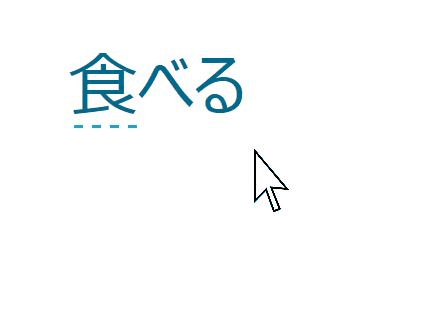Kanji: Introduction
A little bit of history
Originally, Japanese was only a spoken language. So, Japanese people had the great (?) idea to borrow the Chinese writing system. Roughly, this is how they did it:

A few centuries later, Japanese people created 2 writing systems based on kanji: hiragana and katakana. But they didn’t get rid of kanji! They were too useful to differentiate homophones (words that have the same pronunciation but a different spelling).
That is why kanji are still used today and have so many different readings.
But don’t panic, KANJI-Link is here to help you memorize them!
Understanding the different types of kanji
Let's have a look at the different ways* kanji were formed.
① Drawing of concrete objects/phenomena (象しょう形けい文も字じ shōkei moji):

② Representation of an abstract concept (指し示じ文も字じ shiji moji):

③ Combination of meanings (会かい意い文も字じ kaii moji):

④ Combination of a component that conveys the general meaning and a component that represents the pronunciation (形けい声せい文も字じ keisei moji):

This last category is the most important one, because more than 70% of kanji were formed this way.
*There are 2 other categories, but since a few amount of kanji fall into them, I chose not to explain them here. If you are curious, you can learn about them on Wikipedia!
Memorizing the shape of a kanji
In order to memorize the first 3 categories, picture association is quite helpful.
But don’t get too much used to it! Kanji have evolved a lot: they were modified and even made more complex throughout many centuries. For example, the kanji for "to follow" was originally written 从 but it was made more complex to prevent low-class people from accessing to knowledge (=power). Nowadays it is written 従! It is often difficult to recognize the original drawing.
What will help you the most in memorizing kanji is breaking them down into smaller units.
For example, you can break down the kanji to write “woman” 女 in く (ku in hiragana) + ノ (no in katakana) + 一 (ichi, one in kanji).

From there, you can make up a story that will help you remember the kanji. In this case, the story already exists: kunoichi is how female ninjas were called !
These strategies also work for more complex kanji. For example, the kanji for “parent” 親 can be broken down into 立+木+見 (standing on a tree to watch over their children).

Of course, knowing hiragana, katakana, and kanji radicals will help you create these associations.
The most frequent radicals
Traditionally, 214 radicals are used to classify kanji in dictionaries. Let’s try to be more efficient and focus on the most frequent ones!
Here are the 48 most frequent radicals:

Memorizing the readings
So far, we have seen great techniques to memorize the shape of a kanji. But we also saw that:
- kanji can have multiple readings
- most kanji are combinations of a component that gives the meaning with a component that gives the pronunciation.
The “secret” to memorize this category more efficiently is to group the kanji that have both a common component and a similar pronunciation. How do you know which kanji to group together? KANJI-Link has done the job for you!
Once you are familiar with the different readings, you have to learn words in which those readings appear, because the more associations you make, the more chance you will have of recalling it later!

